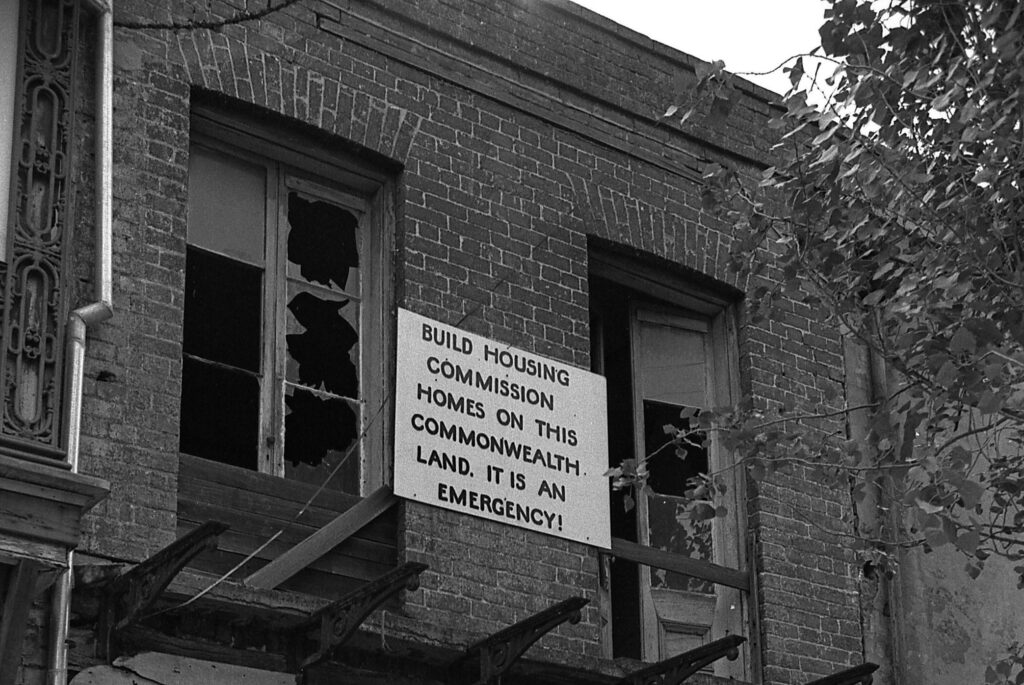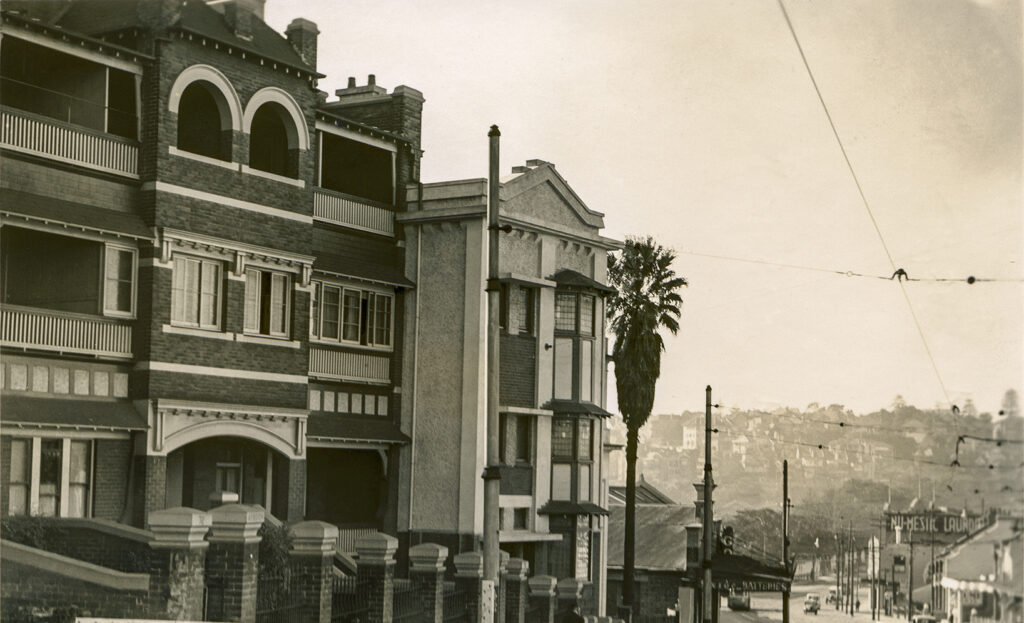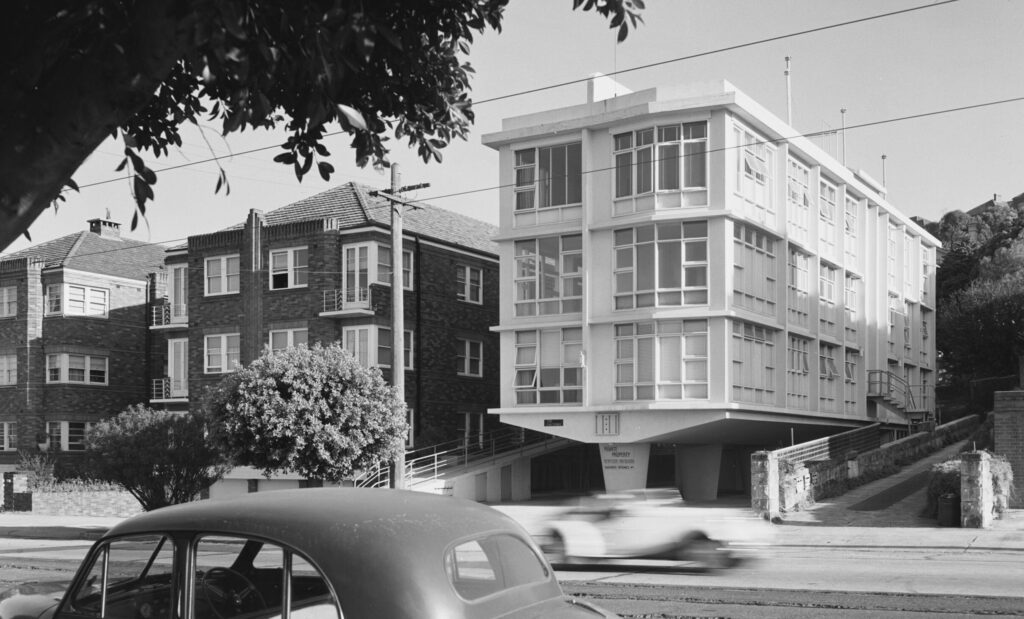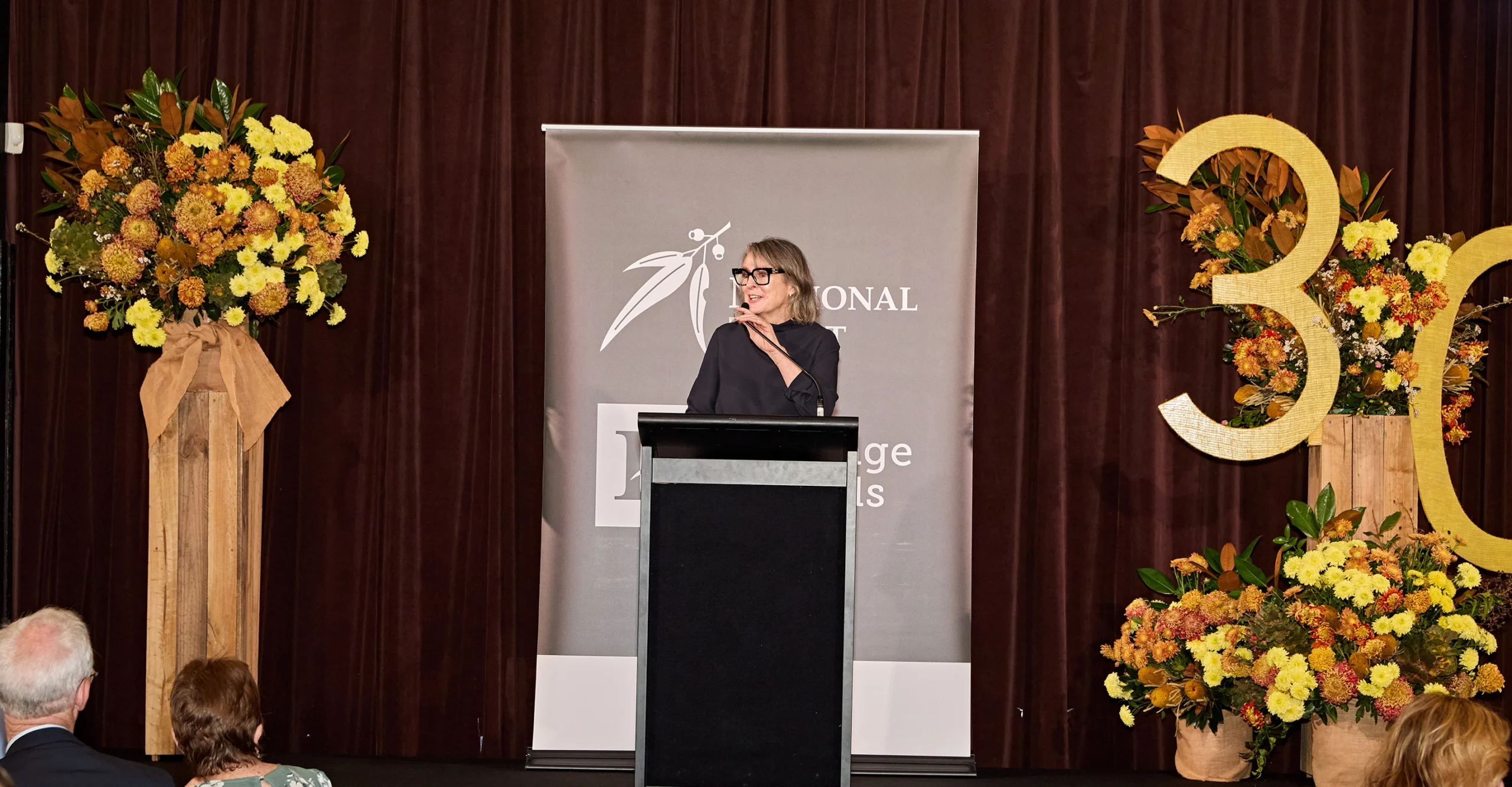
Planning and heritage in a mongrel city
GML Heritage CEO Sharon Veale delivered the keynote address at the 30th annual National Trust (NSW) Heritage Awards on Friday 17 May 2024.
I want to acknowledge we gather on the unceded Country of the Gadigal, and pay respects to their Elders past and present.
I’m thrilled to be here today, it’s the heritage industry’s equivalent of the Logies, minus the red carpet and frocks.
Imagine a mongrel city, as urban planner and academic Leonie Sandercock describes 21st century cities.1 A city where histories, values and aspirations are intertwined in a restless writhing tangle. Sydney embodies this mongrel identity, grappling with a myriad of challenges—a burgeoning population, a housing affordability crisis, socio-economic and spatial inequities, and the looming spectre of climate change. But Sydney is not alone, cities globally are facing similar complexities. These challenges often stem from broader issues, and some might even point to the crisis of democratic capitalism.2
In this context, heritage preservation emerges as a crucial but contentious aspect of urban planning, presenting governments at all levels with significant dilemmas. How do we simultaneously respect the histories and heritage of our urban and suburban environments, while ensuring dignity and belonging for all, as we plan the future? Who gets to decide whether the past comes with us or not? Heritage conservation must surely navigate these myriad tensions and complexities, to ensure a more equitable and sustainable urban environment.
Today, through the lens of the Government’s recent Transport Oriented Development, or TOD program, I intend to explore some of the recent fissures and what they might indicate about attitudes to heritage and our relationship to the past.
At this point too, it would be remiss of me if I did not thank the National Trust for this opportunity to speak and acknowledge the extraordinary contributions of its staff and volunteers to our lives, landscapes and historic places.
Under the National Housing Accord, the NSW Government’s ‘big bold and blunt’3 Transport Oriented Development planning reforms are projected to build 170,000 new homes by 2039.4 The program effectively proposes to shoehorn new housing around 37 railway stations and 8 accelerated master planned precincts.5 The accompanying Transport Oriented Development State Environmental Planning Policy commenced on Monday 13 May with 18 TOD stations. Under the program within 400m of the designated stations apartment buildings of between 22 to 24 metres, or more with floor space bonuses, will be permitted. Many of the uplift zones include heritage conservation areas and statutory-listed state and local heritage items.
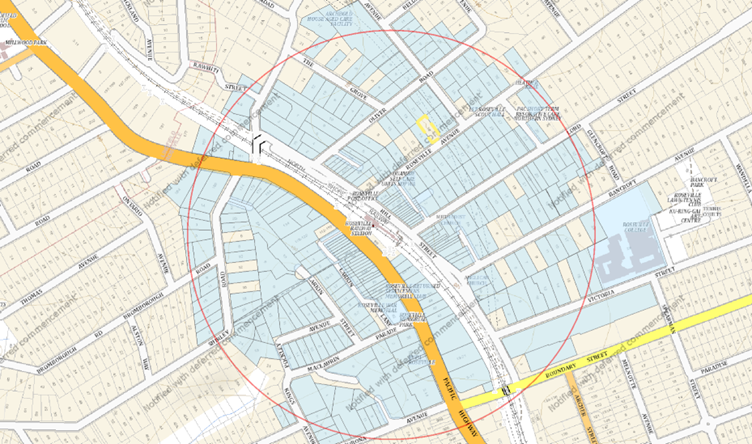
The first iteration of the TOD maps released by the Department of Planning, Infrastructure and Environment showing the 400m TOD zone around Roseville Station defined by a red circle and the TOD affected lots in blue. Source: NSW Spatial Viewer
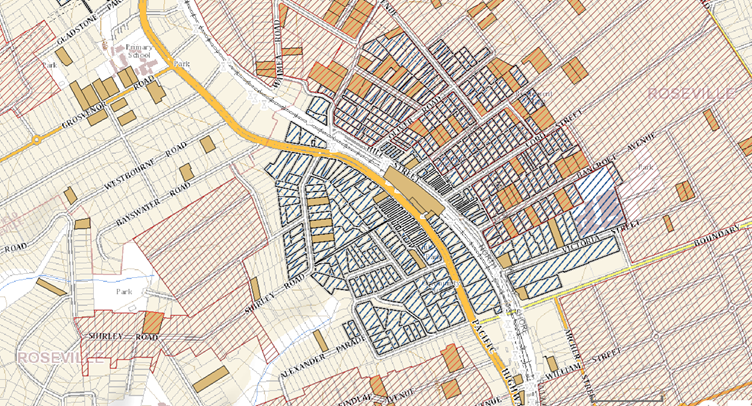
An updated TOD map showing heritage items in tan and heritage conservation areas with red hatching. The blue hatched allotments are TOD development sites. The mapping also indicates that lots straddling the TOD area, or just outside, are considered TOD affected. Source: NSW Spatial Viewer
On one level, the TOD program could have presented a unique opportunity to reimagine the intersection of growth and heritage. Yet despite assurances of local heritage controls still applying, significant changes are expected. This has ignited heated debate between developers and conservationists, advocates and activists, communities and councils, YIMBYs and NIMBYs, about density, property values, rights, and the very essence of our urban identity. Some members of the affected communities have embraced the change, while others are vigorously defending their local areas against new development.
In the affrays, those that support heritage conservation have been characterised as elitist and anti-development. Heritage protection has been blamed for the housing supply and affordability crisis. According to the NSW Productivity commissioner, ‘vast areas’ of metropolitan Sydney listed as heritage conservation areas and heritage items have ‘greatly reduced land for new housing in some of Sydney’s most desirable areas’ driving prices and rents up.6
Heritage practice has been criticised for being non-expert, non-objective and biased. Some public sentiment suggests that ‘ordinary’ or mundane historic suburbs or mid-century buildings are not ‘heritage’, and identifying such areas and items exemplifies the industry’s vested interest in creating work and pandering to councils and resident communities in hindering development.
The values attached to the historic urban landscape of the TOD areas haven’t played a part in the debates. Sydney’s train lines and stations were developed from the 1850s. It should be no surprise then that many of the TOD station areas include statutory listed HCAs and heritage items. The grounds and gardens of inner-city historic estates were subdivided by builders and real estate agents for terraces and confections in brick and stucco. The rail network expanded exponentially during the latter part of the century mirroring Sydney’s population and suburban growth. In the 20th century, waves of high rise residential flat buildings changed the city’s skyline and many Sydney suburbs.
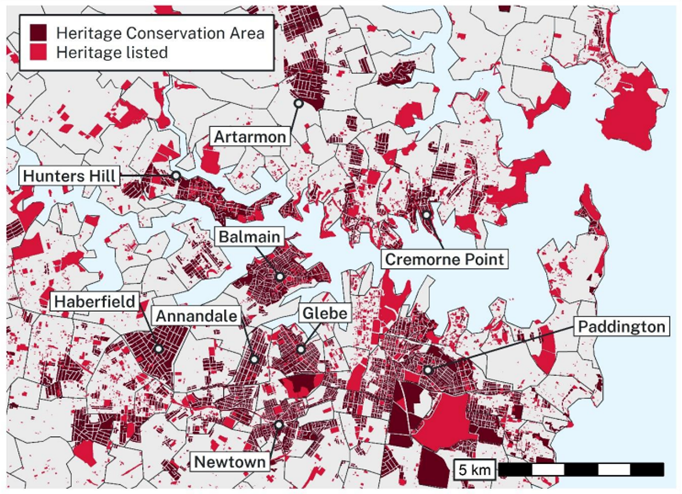
Heritage listed areas of inner Sydney, 2021, illustrating that ‘blanket historic zoning stops more people living in Sydney’s most valued locations’. Source: NSW Productivity Commission, February 2024
The structural issues with housing demand and supply are not new either, and can’t be blamed on heritage listing. Chronic under supply of housing was an urgent issue post war,7 and since then variously, insufficient land supply, regulatory hurdles, market volatility, public policy and tax concessions have all contributed to housing shortages, affordability, and urban sprawl.
The ideological battles around low-density suburban housing and the resistance to higher density apartment or flat buildings have a long history. They are deeply engrained in the Australian Dream and public psyche and have been supported politically through public policy.
Historically then, heritage is not a barrier to development but a vital thread. Historic neighbourhoods have had to adapt to and absorb new cultures, new development, and higher densities historically, shaping Sydney’s ever evolving urban landscape. While some of the public debates about heritage springing from the public reaction to the TOD program might seem novel, they have been echoed in myriad forms at various times in Sydney’s history and highlight the enduring tensions between ‘progress’ and preservation.
It prompts me to think, it might be time for a critical re-evaluation of our approaches to planning, architecture, and heritage conservation—to ensure that we navigate today’s challenges more effectively. Devoid of historical dialectics, the reforms have been evolved without any substantive community engagement, or nuanced understandings or evidence about contemporary heritage planning and practice, let alone other planning considerations.
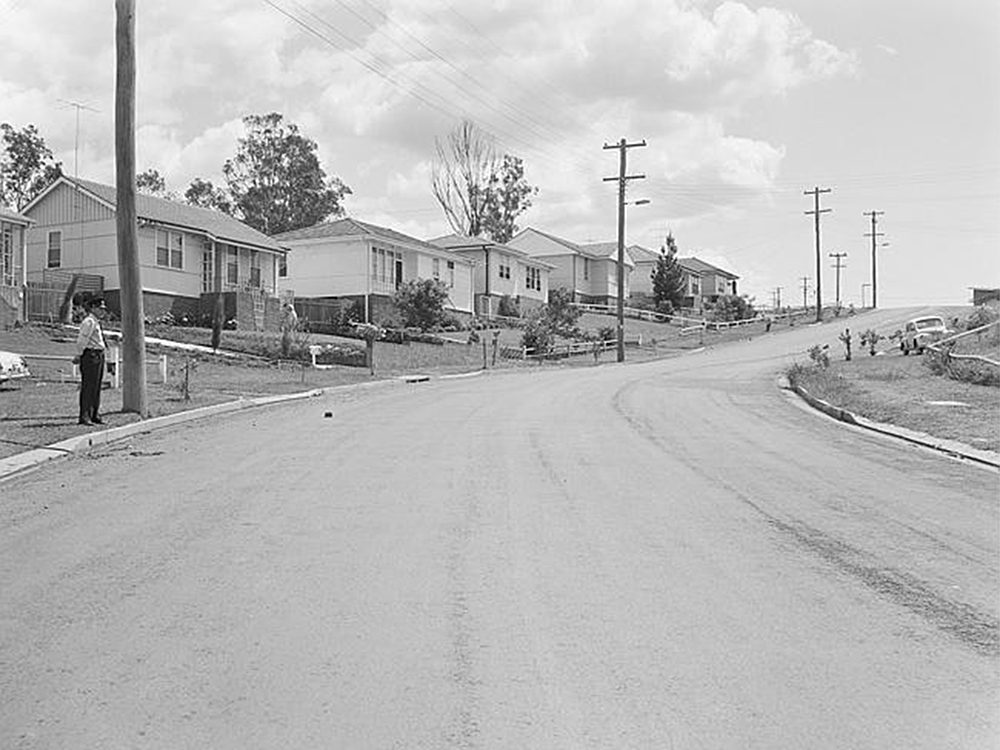
Mount Pritchard c1960s, showing typical post war residential subdivision. Source: Justice and Police Museum collection, MHNSW
Yet, internationally, cities such as London, Vancouver, and Paris, offer different approaches to heritage tethered to communities and inclusive and sustainable growth. For example, research by the British Council provides an integrated approach to cultural heritage.8 It is recognised as a sector, and as physical spaces and intangible practices, as well as a force for people centred inclusive and sustainable growth.
London Plan making and policy is supported by a Characterisation and Growth Strategy.9 The strategy has at its basis: character and capacity for growth analysis; infrastructure requirements for sustainable densities; and heritage conservation and growth considerations. The approach integrates both the social and physical character to determine and optimise growth.10
In Vancouver, the city-wide land use plan to 2050 which is to guide growth and change involved four phases of public engagement, and two years of technical analysis. Heritage stewardship is a key direction, emphasising cultural diversity and inclusion, and addressing discrimination, erasure and loss.11
In Paris, the city’s local planning scheme is in the final stage of being updated.12 The general revision commenced in 2020, with innumerable public consultation phases and technical diagnostics13 to meet environmental objectives and rebalance housing and employment targets. This bioclimatic plan has as one of its key themes ‘a city that enhances its existing heritage’. To that end, they are extending listings, and applying special provisions to greening existing buildings, and upgrades to buildings from 1950, 1960s and 1970s to contribute to liveability and climate adaptation.14
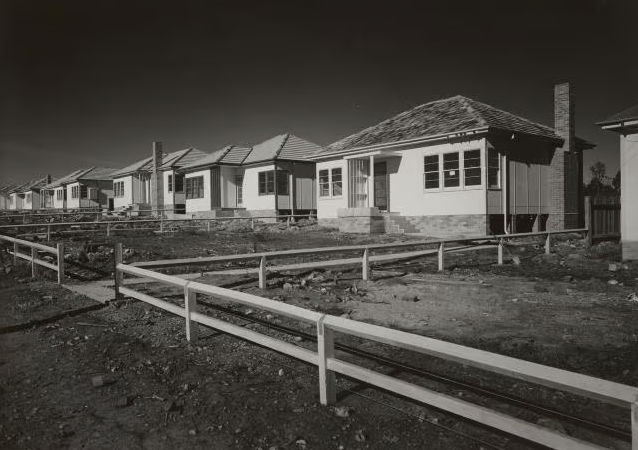
Vandyke Bros houses at East Hills, photo by Max Dupain, East Hills, NSW, 1948. Source: Powerhouse Museum collection
According to the UN, the building sector is responsible for 37% of greenhouse gas emissions globally.15 In Paris, 70% of urban planning licenses are for adaptive reuse projects with planning provisions favouring the rehabilitation of existing buildings. Thresholds for social housing are ambitious too, with a minimum of 30% for many housing programs, and in some areas up to as much as 50%.
Back here, the recent criticisms and disagreements around heritage might make entertaining reading. Yet now heritage is a hard sell. It feels more like a luxury we can no longer afford.
On the contrary, might the vociferous debate indicate just how important heritage is? This is not just a petty squabble, heritage is a thorn, deep in the flesh. We need to embrace the arguments and accept that heritage is persistently being negotiated. It’s part of the life of the city and our communities. It is dynamic and has evolved politically and socially within communities by each generation. Resistance, activism and counternarratives might just be the lifeblood of heritage, and have given it much more besides, helping us see the value in not only other peoples and cultures, but ordinary everyday practices and places. Together we need to insist we are at the table contributing to imagining changing the world with an enriched archive of our city’s historic and cultural legacies for generations to come.
We know history is complicated and some places have uncomfortable pasts. Keeping and interpreting such places is instructive. Our heritage is one of our best resources for helping people confront the past, particularly if we approach that past through truth. It connects us deeply to conversations about the environment, climate change and our health and wellbeing. It also connects us to profound existential questions about who we are as individuals, communities, states and nations.
Philosopher, Martin Heidegger considered being, dwelling and thinking integral to human flourishing.16 This means that heritage is not merely about conserving or resisting the demolition of historic places but nurturing and recognising quotidian meanings, connections, and a sense of belonging.
In grappling with the myriad obstacles and challenges in this mongrel city, we would do well to remember that sustainability, social equity and spatial justice will need to be at the heart of our radical hope, and heritage can play such an important role in helping to achieve this.
Heritage conservation is not a luxury, but integral to sustainable and equitable urban development. Just as our urban history shows us, heritage is a dynamic force persistently shaping our cities and communities. We should also be encouraged by the fact that connected communities, and organisations such as the National Trust and ICOMOS, and many more besides, have achieved profound and transformative outcomes for our cities and other places through action, activism and engagement.
So, in conclusion, let’s keep going, buoyed by what we have achieved in heritage conservation, and inspired by the outstanding efforts of the people and projects that have been recognised and honoured today!
Thank you.
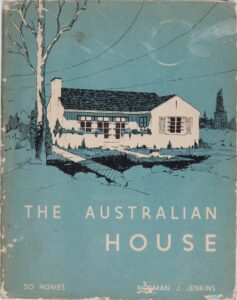
The Australian House by Norman Jenkins, WJ Nesbit, 1946. Source: Caroline Simpson Library & Research Collection, MHNSW.
Footnotes
1 Leonie Sandercock, Cosmopolis II Mongrel Cities of the 21st Century, Continuum, New York, 2003.
2 Martin Wolf, The Crisis of Democratic Capitalism, Allen Lane, 2023.
3 See: Committee for Sydney, when the TOD program was first announced, CEO Eamon Waterford, said it was ‘big bold and blunt’. He subsequently labelled it ‘Big, bold and balanced’ https://sydney.org.au/big-bold-and-balanced-committee-for-sydney-welcomes-expanded-tod-program accessed 10 May 2024.
4 See: NSW Government Department of Planning www.planning.nsw.gov.au/policy-and-legislation/housing/transport-oriented-development-program/transport-oriented-development accessed 10 May 2024.
5 Ibid.
6 NSW Productivity Commission, What we gain by building more homes in the right places, February 2024, see section 3.3 ‘Balance heritage with renewal, diversity and vibrancy’.
7 See: Rae Dufty-Jones, ‘We’ve had a major housing crisis before-and this is how they fixed it’, Sydney Morning Herald, 19 April 2017, at www.smh.com.au/opinion/weve-had-a-major-housing-crisis-before–and-this-is-how-they-fixed-it-20170418-gvmsoe.html accessed 12 May 2024
8 See: RSA, in partnership with the British Council, Heritage for Inclusive Growth, 2020.
9 Greater London Authority, Characterisation and Growth Strategy LPG, 8 June 2023. See https://www.london.gov.uk/sites/default/files/2023-06/Characterisation%20and%20growth%20strategy%20LPG.pdf
10 See: OECD and Ford Foundation, Paris Action Plan for Inclusive Growth in Cities, From Ambition to Implementation, which followed the 2016 New York Proposal for Inclusive Growth in Cities, at https://www.oecd.org/inclusive-growth/champion-mayors/internationalandregionalevents/Binder2.pdf accessed 12 May 2024
11 See: ‘Direction 8.3 Heritage Stewardship’, Vancouver Plan 2050, City of Vancouver, https://vancouverplan.ca/ accessed 12 May 2024
12 See: Local bioclimatic urban plan: towards a greener and more united Paris, https://www.paris.fr/pages/plan-local-d-urbanisme-bioclimatique-vers-un-paris-plus-vert-et-plus-solidaire-23805 accessed 12 May 2024
13 See: ‘The territorial diagnosis of the Paris Local Urbanism Plan’, at https://www.apur.org/en/geo-data/territorial-diagnosis-paris-local-urbanism-plan-plu accessed 12 May 2024
14 See: Local bioclimatic urban plan: towards a greener and more united Paris, https://www.paris.fr/pages/plan-local-d-urbanisme-bioclimatique-vers-un-paris-plus-vert-et-plus-solidaire-23805 accessed 12 May 2024
15 See: United Nations Environment Programme, & Yale Center for Ecosystems + Architecture (2023). Building Materials and the Climate: Constructing a New Future, at https://wedocs.unep.org/20.500.11822/43293 accessed 12 May 2024
16 Jeff Malpas, Heidegger and the Thinking of Place: Explorations in the Topology of Being, 2012, Massachusetts Institute of Technology, pp13-22,
